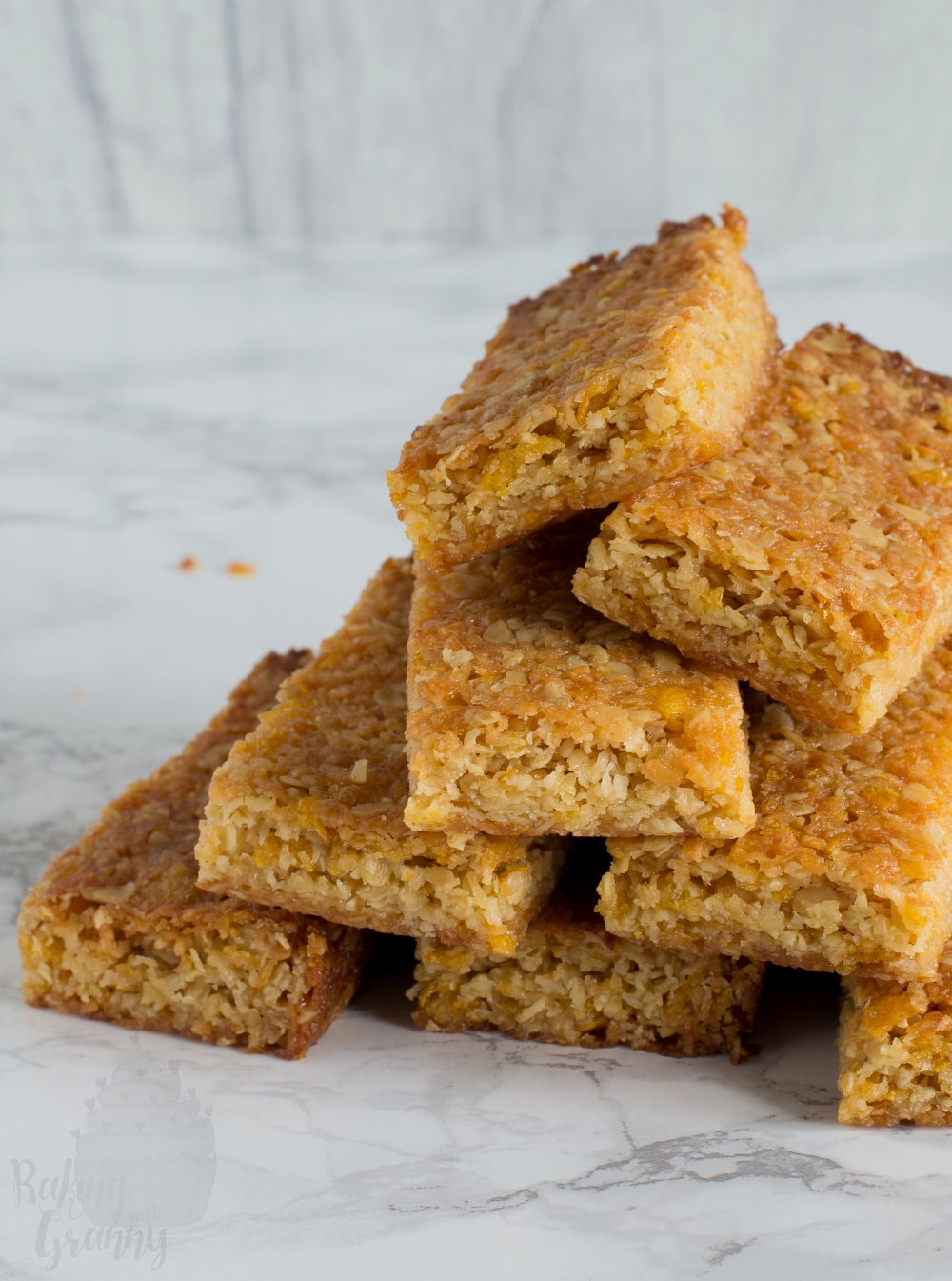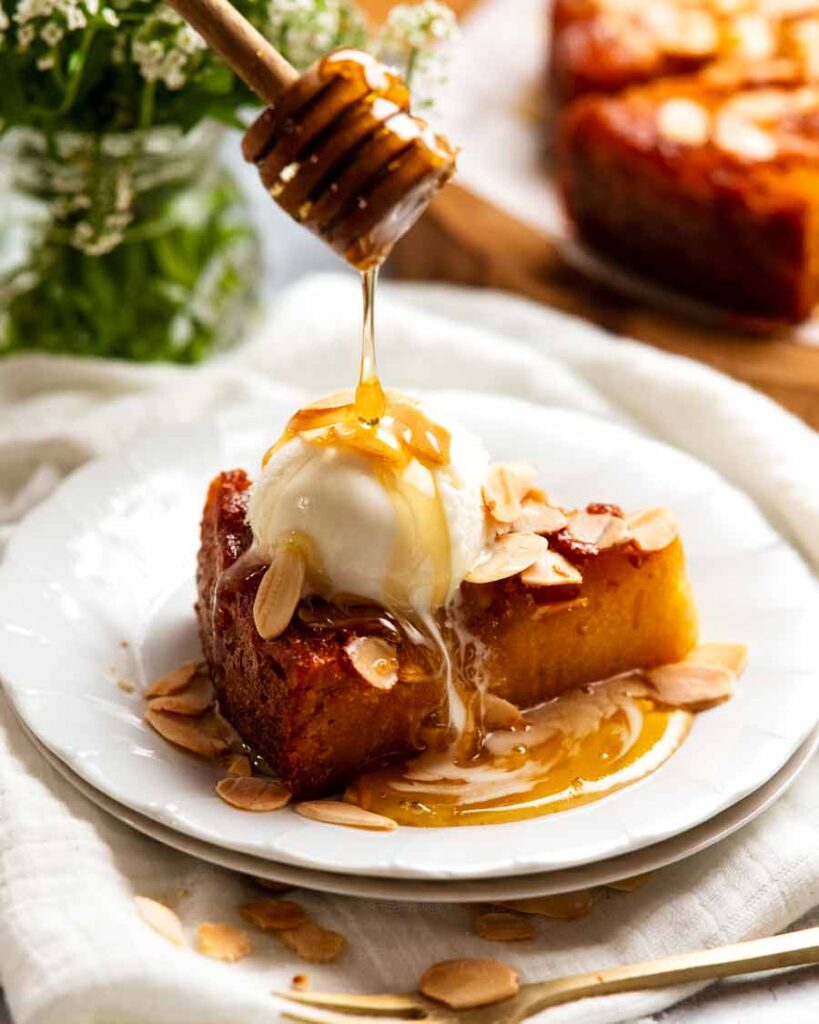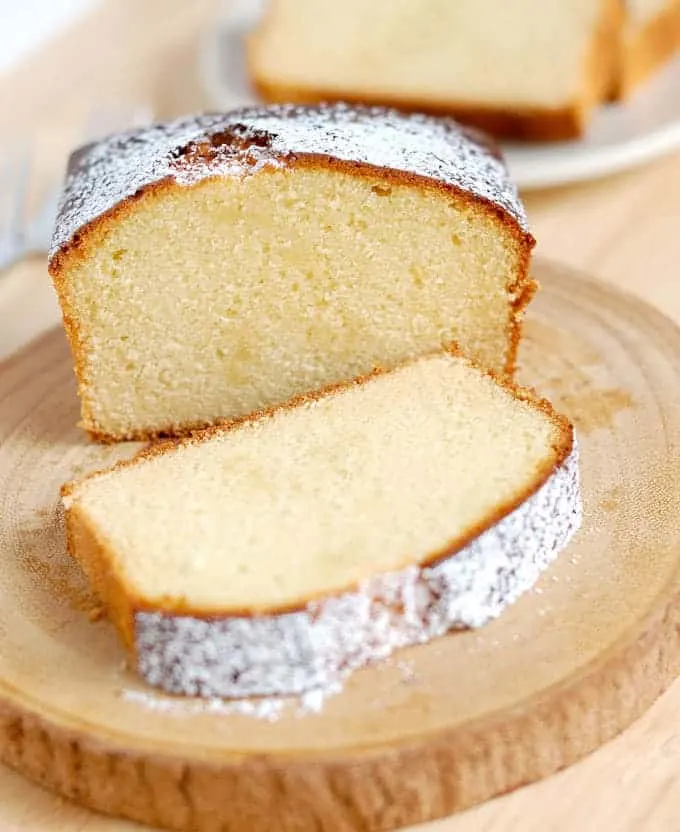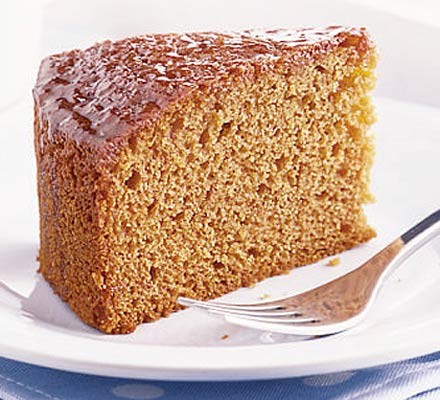
In this article, discover how to elevate your baking to new heights by incorporating the golden goodness of honey into your recipes. Unlock the secret to creating irresistibly moist and flavorful treats that will leave your taste buds begging for more. Harness the natural sweetness and unique properties of honey as you step into a world of endless possibilities in the realm of baking. Say goodbye to ordinary desserts and hello to a tantalizing array of creations that will have everyone buzzing with delight. So, grab your apron and get ready to infuse every bite with a touch of irresistible sweetness. Let the transformation begin!
Benefits of Using Honey in Baking
Enhances Flavor and Aroma
When it comes to baking, flavor and aroma are key. The natural sweetness of honey adds depth and complexity to your baked goods, making them more enjoyable for your taste buds. The distinct floral notes in different varieties of honey can also lend a unique and delicious flavor profile to your creations.
Adds Moisture
One of the biggest advantages of using honey in baking is its ability to retain moisture. The natural hygroscopic properties of honey help to keep your baked goods moist and tender for longer periods of time. This is particularly beneficial for recipes like cakes, cookies, and breads, ensuring that they stay fresh and delectable.
Provides Natural Sweetness
Instead of relying solely on processed sugars, incorporating honey into your baked goods allows you to achieve a natural sweetness. The complex blend of sugars in honey, such as fructose and glucose, gives your creations a balanced and satisfying taste. Plus, the natural sweetness of honey may reduce the need for additional sweeteners, making your baked goods healthier overall.
Extends Shelf Life
Due to its moisture-retaining properties, honey can help extend the shelf life of your baked goods. The sugar content in honey creates an inhospitable environment for bacteria and other microorganisms, inhibiting their growth and preventing spoilage. This means that your homemade goodies can be enjoyed for a longer period of time without losing their freshness.
Boosts Nutritional Value
In addition to its delightful taste, honey also brings some nutritional perks to your baking. It contains trace amounts of vitamins, minerals, and antioxidants, which can contribute to a healthier diet. While the exact nutritional value may vary depending on the variety of honey, incorporating this natural ingredient into your baking adds an extra layer of goodness to your treats.
Choosing the Right Honey for Baking
Different Varieties of Honey
Honey comes in a wide range of varieties, each with its own distinct flavor profile and characteristics. Some common varieties include acacia honey, clover honey, buckwheat honey, and manuka honey. Each variety can bring a unique twist to your baked goods, so consider experimenting with different kinds to find your favorite.
Floral vs. Bold Flavors
When choosing honey for your baking, you’ll come across both floral and bold flavors. Floral honey, such as acacia or clover honey, has a delicate and light taste that pairs well with lighter baked goods like muffins and scones. On the other hand, bold varieties like buckwheat or manuka honey offer a more robust flavor that can enhance heartier recipes such as breads and granola.
Raw vs. Processed Honey
Another consideration when selecting honey for baking is whether to use raw or processed honey. Raw honey is unfiltered and unheated, preserving more of its natural enzymes and nutrients. It has a thicker texture and stronger flavor compared to processed honey. Processed honey, on the other hand, undergoes filtration and pasteurization, resulting in a smoother and more consistent product. The choice between raw and processed honey depends on personal preference and the desired outcome of your baked goods.
Considerations for Recipe
When choosing honey for a specific recipe, consider the flavor and texture you want to achieve. Lighter varieties of honey, such as acacia or clover honey, work well in delicate desserts like fruit tarts or meringues. For baked goods with stronger flavors, like gingerbread or dark chocolate cake, a bold honey like buckwheat or manuka can provide an intense and distinctive taste. Experimenting with different honey varieties can add a touch of excitement to your baking adventures.

This image is property of www.recipetineats.com.
Substituting Honey for Other Sweeteners
Conversion Ratios
When substituting honey for other sweeteners, it’s important to consider the differences in sweetness and moisture content. Generally, you can replace one cup of sugar with 3/4 cup to 1 cup of honey. Keep in mind that honey is sweeter than sugar, so you may want to start with a smaller amount and adjust to taste. It’s always a good idea to refer to specific recipes or consult a baking conversion chart for more accurate measurements.
Adjusting Liquids and Dry Ingredients
Since honey has a higher moisture content compared to granulated sugar, it’s important to make adjustments to the liquids in your recipe. For every cup of honey you use, reduce the liquids, such as milk or water, by 1/4 cup. This helps maintain the desired consistency of your batter or dough. Additionally, honey can cause baked goods to brown more quickly, so consider reducing the oven temperature by 25 degrees Fahrenheit and adjusting the baking time accordingly.
Balancing Flavor Profiles
When substituting honey for other sweeteners, it’s important to consider the impact on the overall flavor of your baked goods. Honey has a distinctive taste that can influence the flavors in your recipe. For instance, using a strong-flavored honey like buckwheat in a delicate lemon cake may overpower the citrus flavors. On the other hand, pairing a mild-flavored honey, such as acacia, with spices like cinnamon or nutmeg can create a harmonious blend. Experiment and taste as you go to find the perfect balance of flavors.
Tips for Baking with Honey
Measure Accurately
To ensure the success of your honey-infused baking endeavors, it’s crucial to measure honey accurately. Honey tends to stick to measuring cups and spoons, making it difficult to get an exact measurement. To overcome this, you can lightly coat the measuring utensil with cooking spray or oil before pouring in the honey. This helps the honey slide off easily and ensures you’re using the right amount for your recipes.
Preventing Over-browning
Honey can cause baked goods to brown more quickly due to its high sugar content. To prevent over-browning, you can lower the oven temperature by about 25 degrees Fahrenheit and extend the baking time slightly. This will allow your baked goods to cook thoroughly without becoming too dark on the outside. Keep a close eye on your treats and use a toothpick or cake tester to check for doneness.
Adjusting Baking Time and Temperature
Since honey adds moisture to your baked goods, you may need to adjust the baking time and temperature accordingly. The added moisture can result in slightly longer cooking times, especially for denser baked goods like bread. It’s important to test for doneness by using a toothpick or cake tester inserted into the center of the baked item. If it comes out clean or with a few crumbs, your treat is ready to be enjoyed!
Using Honey in Yeast Dough
When incorporating honey into yeast dough, there are a few important things to keep in mind. Honey contains natural enzymes that can affect the yeast activity. To ensure a proper rise, it’s recommended to dissolve honey in warm water before adding it to the dough. This helps activate the yeast and ensures optimal fermentation. Additionally, using honey in yeast dough can result in a slightly denser texture, so be mindful of this when adjusting your recipe.
Combining Honey with Other Ingredients
Honey can be combined with various other ingredients to enhance the flavor and texture of your baked goods. For example, adding honey to butter or oil in a cake batter can create a moist and tender crumb. You can also use honey in conjunction with spices, nuts, or dried fruits to create unique and flavorful combinations. Don’t be afraid to get creative and experiment with different flavor pairings to elevate your baked treats.

This image is property of www.baking-sense.com.
Honey-Based Baked Goods Recipes
Honey Nut Granola Bars
Ideal for a quick and wholesome snack, honey nut granola bars are easy to make and packed with nutritious ingredients. Using a combination of rolled oats, nuts, seeds, and honey, you can create a delicious and energizing treat that will satisfy your cravings. The natural sweetness of honey binds the ingredients together and adds a touch of delectable flavor. Feel free to customize your granola bars by adding your favorite dried fruits or chocolate chips.
Honey Whole Wheat Bread
For those looking to incorporate honey into their daily bread, honey whole wheat bread is the perfect recipe. The nutty sweetness of honey pairs beautifully with the earthiness of whole wheat flour, resulting in a loaf that is both flavorful and wholesome. The added moisture from the honey also helps create a soft and tender crumb. Slather a warm slice with butter or your favorite jam for a delightful breakfast or snack option.
Honey Banana Muffins
Honey banana muffins are a delightful twist on classic banana bread. The natural sweetness of honey perfectly complements the ripe bananas, resulting in a moist and flavorful treat. Packed with nutrients from the bananas and the natural goodness of honey, these muffins are a great option for a quick and easy breakfast on the go. Feel free to add nuts, chocolate chips, or a hint of cinnamon to take these muffins to the next level.
Honey Glazed Carrots
Adding a touch of honey to savory dishes can also bring a delightful element to your meals. Honey glazed carrots offer a perfect balance of sweetness and earthiness. The honey caramelizes during cooking, creating a glossy and flavorful glaze that coats the tender carrots. This side dish pairs well with a variety of main courses and adds a pop of color to your plate. Transforming your baking skills to include savory delights is a great way to explore the versatility of honey.
Health Benefits of Honey in Baking
Antioxidant Properties
Honey contains antioxidants that can help protect your body against harmful free radicals. These antioxidants, such as flavonoids and phenolic compounds, have been linked to various health benefits, including reducing inflammation and lowering the risk of chronic diseases. Incorporating honey into your baked goods allows you to indulge in sweet treats while also reaping some of these antioxidant benefits.
Wound Healing Abilities
Honey has been revered for its wound healing properties for centuries. When applied topically, honey can help promote the healing of minor cuts and burns due to its antimicrobial and anti-inflammatory effects. While not directly related to baking, understanding the broader health benefits of honey can give you a greater appreciation for this golden ingredient.
Soothing Sore Throats
Honey has long been used as a natural remedy to soothe sore throats and coughs. Its viscous consistency creates a soothing effect on the throat, while its antimicrobial properties can help reduce the irritation and inflammation. Enjoying a warm slice of honey-infused bread or a soothing cup of herbal tea sweetened with honey can provide comfort during times of throat discomfort.
Potential Allergy Benefits
Consuming locally sourced honey has been suggested as a way to alleviate seasonal allergies. The theory is that consuming small amounts of local pollen through honey can help desensitize the body’s immune response to pollen allergens. While further research is needed to fully support this claim, honey can still be enjoyed as a delicious addition to your baking repertoire.
Digestive Health
Honey may also offer some digestive benefits when consumed in moderation. Its prebiotic properties can support a healthy gut by promoting the growth of beneficial bacteria. Additionally, honey’s natural sugars are easier to digest compared to processed sugars, making it a gentler option for those with sensitive stomachs. However, it’s important to enjoy honey in moderation and consider any individual dietary restrictions or sensitivities.

This image is property of bakingwithgranny.co.uk.
Using Honey in Gluten-Free Baking
Complementing Gluten-Free Flours
Gluten-free baking can often result in dry and crumbly creations. However, incorporating honey can help improve the texture and moisture content of gluten-free baked goods. The natural sugars and moisture in honey work together to bind the ingredients, resulting in a more cohesive and moist final product. Whether you’re making gluten-free cookies, cakes, or breads, honey can be a valuable addition to your recipes.
Improving Texture and Moisture
Honey acts as a humectant in gluten-free baking, helping to retain moisture and create a softer texture. This is particularly beneficial for gluten-free breads, which can often be dense and dry. The addition of honey can help produce a lighter and more tender loaf, making it a delightful and satisfying option for those with gluten sensitivities.
Baking Time and Temperature Adjustments
When using honey in gluten-free baking, it’s important to keep an eye on the baking time and temperature. Honey can cause gluten-free baked goods to brown more quickly, so consider reducing the oven temperature by about 25 degrees Fahrenheit and extending the baking time slightly. This will ensure that your treats are fully cooked without becoming overly dark on the outside.
Honey and Vegan Baking
Replacing Eggs with Honey
For vegans looking to replace eggs in their baking, honey can serve as a valuable alternative. The natural stickiness and binding properties of honey can help hold ingredients together, acting as a substitute for eggs. To replace one egg, you can use 1/4 cup of honey. Keep in mind that this substitution may slightly alter the texture and flavor of your baked goods, so it’s important to experiment and adjust as needed.
Substituting Honey for Dairy Products
In vegan baking, honey can also be used as a substitute for dairy products like milk or butter. Honey adds moisture and richness, enhancing the overall texture and flavor of your treats. When subbing honey for dairy, consider adjusting the other liquid and fat components in the recipe to maintain the desired consistency. This way, you can create delectable vegan baked goods that are both dairy-free and honey-infused.
Vegan-Friendly Honey Alternatives
While honey is not vegan-friendly due to its origin as a byproduct of bees, there are vegan-friendly honey alternatives available. These alternatives are typically made with plant-based ingredients and mimic the taste and texture of honey. They can be used in the same way as honey in baking and offer a cruelty-free option for vegans. Look for options like agave nectar, maple syrup, or date syrup to satisfy your honey cravings while keeping your baking vegan-friendly.

This image is property of images.immediate.co.uk.
Exploring Different Honey Flavors
Acacia Honey
Acacia honey is known for its light color and mild floral flavor. It has a subtle sweetness that pairs well with delicate desserts like fruit tarts or teas. Acacia honey is prized for its smooth texture and is often considered a premium honey variety.
Clover Honey
Clover honey is one of the most common varieties found in grocery stores. It has a sweet and slightly floral taste, making it versatile in baking. Clover honey works well in a wide range of recipes, from cookies and cakes to glazes and dressings.
Buckwheat Honey
Known for its strong and robust flavor, buckwheat honey is a favorite among honey connoisseurs. It has a rich, molasses-like taste with hints of malty sweetness. Buckwheat honey is perfect for adding an intense flavor to baked goods like breads, muffins, or even barbecue sauces.
Manuka Honey
Manuka honey is produced in New Zealand from bees that pollinate the native manuka bush. It is known for its unique medicinal properties and is often used for its potential health benefits. Manuka honey has a rich, earthy flavor that can enhance a variety of recipes, from sweet to savory.
Storing and Preserving Honey for Baking
Proper Storage Containers
To keep your honey fresh and flavorful, it’s important to store it in the right containers. Glass jars with tight-fitting lids are an excellent choice, as they protect the honey from moisture and sunlight. Avoid using metal containers, as they can react with the honey and affect its quality. Keep your honey in a cool and dark pantry or cupboard to maintain its optimal flavor and consistency.
Avoiding Heat and Moisture
Honey is sensitive to heat and moisture, which can cause it to lose its quality and texture. It’s important to keep your honey away from direct sunlight or other heat sources, as this can lead to crystallization and degradation of its natural enzymes and flavors. Additionally, avoid introducing moisture into the honey jar, as it can promote bacterial growth and spoilage.
Preventing Crystallization
Crystallization is a natural process that occurs in honey as it ages. While it doesn’t affect the safety or taste of the honey, it can change its texture and make it less appealing. To prevent crystallization, store your honey in a cool place and avoid temperature fluctuations. If your honey does crystallize, simply place the jar in warm water (not boiling) and stir gently until the crystals dissolve.
Reviving Crystallized Honey
If your honey has already crystallized, there’s no need to worry. Crystallized honey can be easily revived and restored to its smooth texture. Simply place the jar in a bowl of warm water and wait until the crystals dissolve, periodically stirring to break up any larger crystals. The gentle heat from the water will melt the sugar crystals, returning your honey to its liquid state.
Transform Your Baking with Golden Goodness
Incorporating honey into your baking not only adds a natural sweetness and depth of flavor, but it also brings a myriad of benefits. From enhancing the aroma and moisture of your creations to boosting nutritional value, honey is a versatile and valuable ingredient to have in your pantry. By understanding the different varieties of honey, making appropriate substitutions, and implementing tried-and-true tips, you can create delectable honey-infused baked goods that are bound to impress. Whether you’re a seasoned baker or just starting to experiment in the kitchen, let the golden goodness of honey elevate your baking to new heights. So go ahead, grab that jar of honey, and let the transformation begin!

This image is property of www.kingarthurbaking.com.